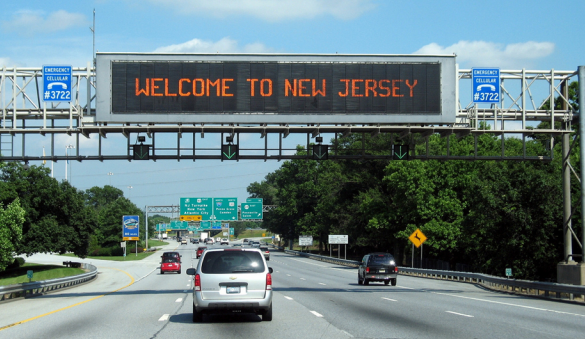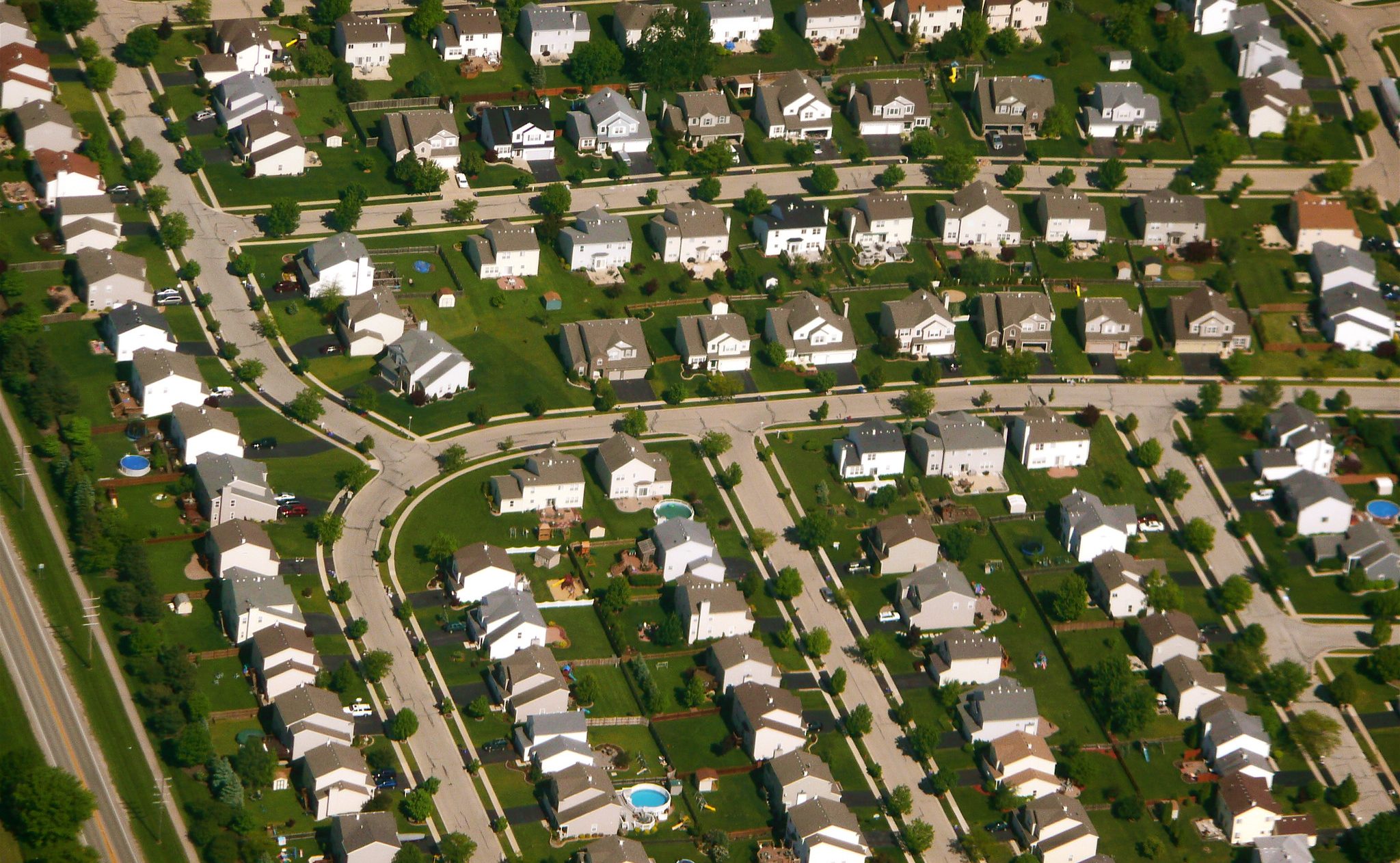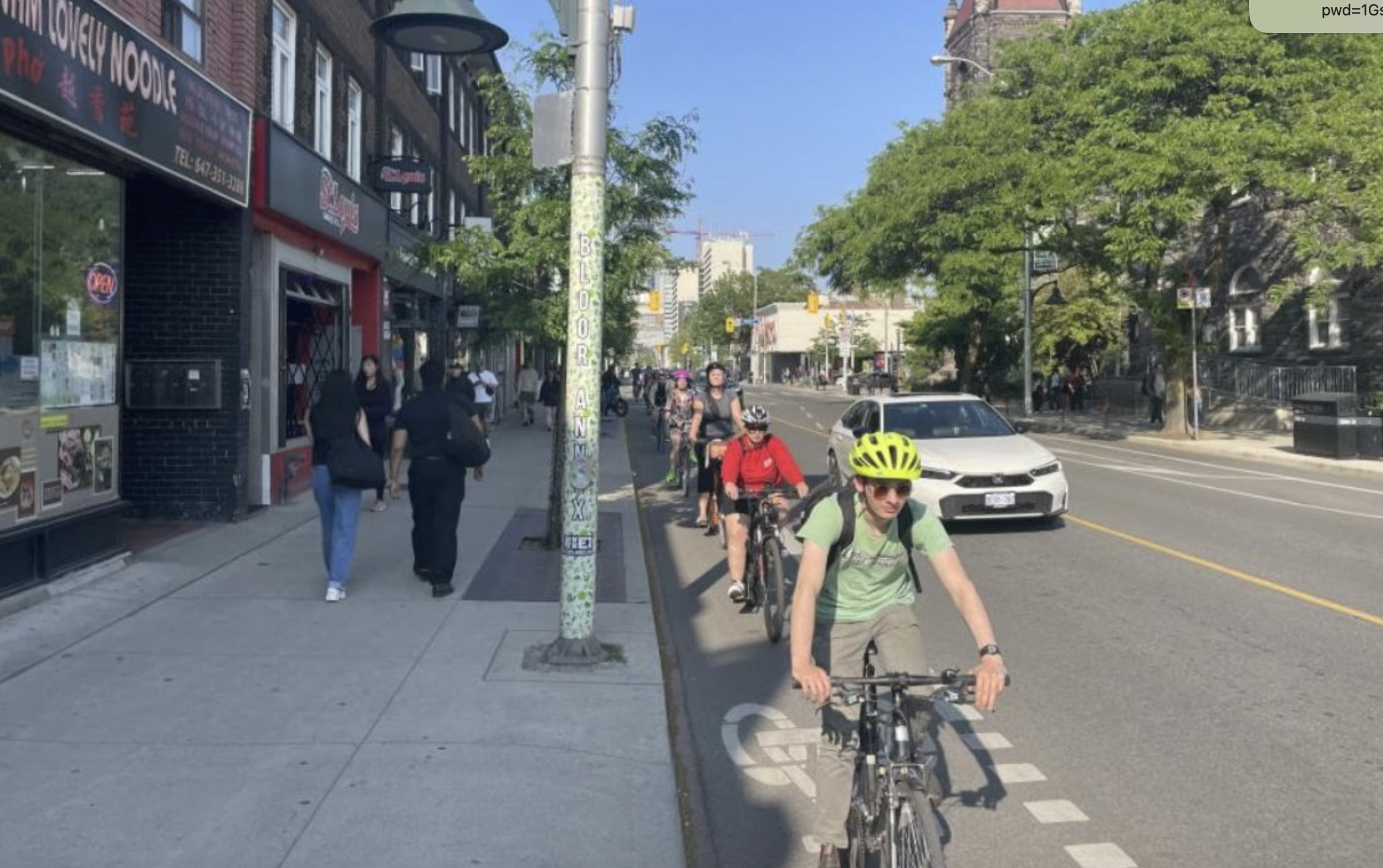
One of the big downsides to sprawl is the public cost of maintaining infrastructure that is extended over wide areas. A new study of New Jersey by Smart Growth America and New Jersey Future [PDF] attempts to quantify this relationship by looking at the amount of space devoted to roads in communities of varying densities.
Turns out there's a very strong correlation: The most sprawling parts of the Garden State require more than three times the road space per resident and employee than the most urban areas.
The study divided New Jersey into 100-acre "cells" of a uniform size, then compared the number of people that live and work in each cell -- "activity density" -- to the ratio of land devoted to roads.
In the state's most densely populated areas, with about 50 people per acre -- places like Hoboken and Jersey City -- about 130 square feet of pavement was allocated for each employee and resident. However, in some of the more sprawling areas -- places with five residents per acre -- the amount of pavement per person was more than three times higher: 423 square feet.
The two groups stress that the relationship was not linear. As municipalities became increasingly urban, the efficiency benefits from increasing density became less and less dramatic. The biggest efficiency gains were found when comparing sprawling areas to other sprawling areas that were slightly more dense, the study found.
The group found that in the least dense areas -- municipalities with under two-and-a-half people per acre -- almost 1,700 square feet of road space was required per person. But in the next most sprawling category, with between two-and-a-half and five people per acre, about half as much was required: 792 square feet.
The upshot is that reducing the share of the state devoted to very, very low density development could result in some big savings. NJF's Tim Evans estimates that if all of New Jersey's developed areas had an "activity density" of 10 people per acre or higher, total municipal road space could be reduced 36 percent, saving an estimated $470 million a year in maintenance costs. It's worth noting that that's not even a very dense arrangement -- about the equivalent of single-family homes on quarter-acre lots.
The findings also have potential equity implications. The results suggest that relatively wealthy homeowners living on large lots might be having their outsized infrastructure needs subsidized by poorer people living in urban areas, report authors say. Although the group says further study of road funding mechanisms is needed.





